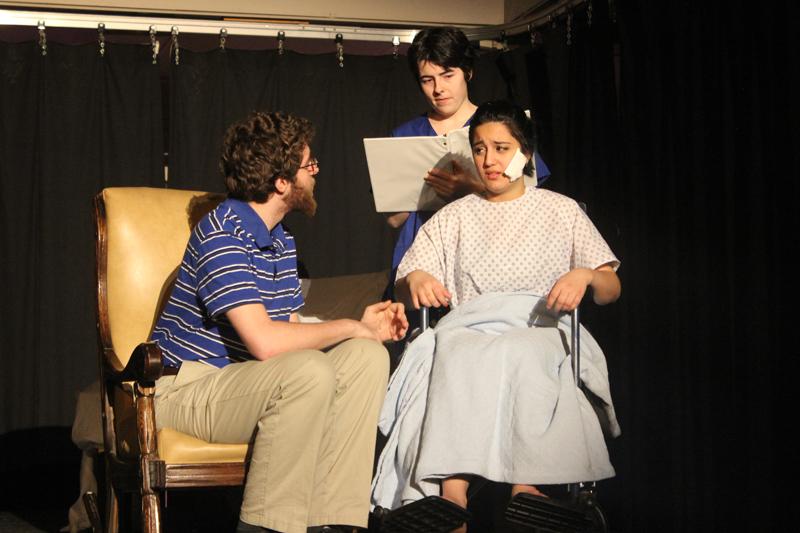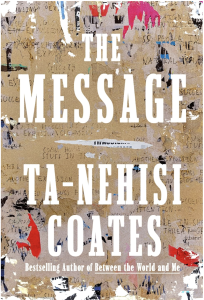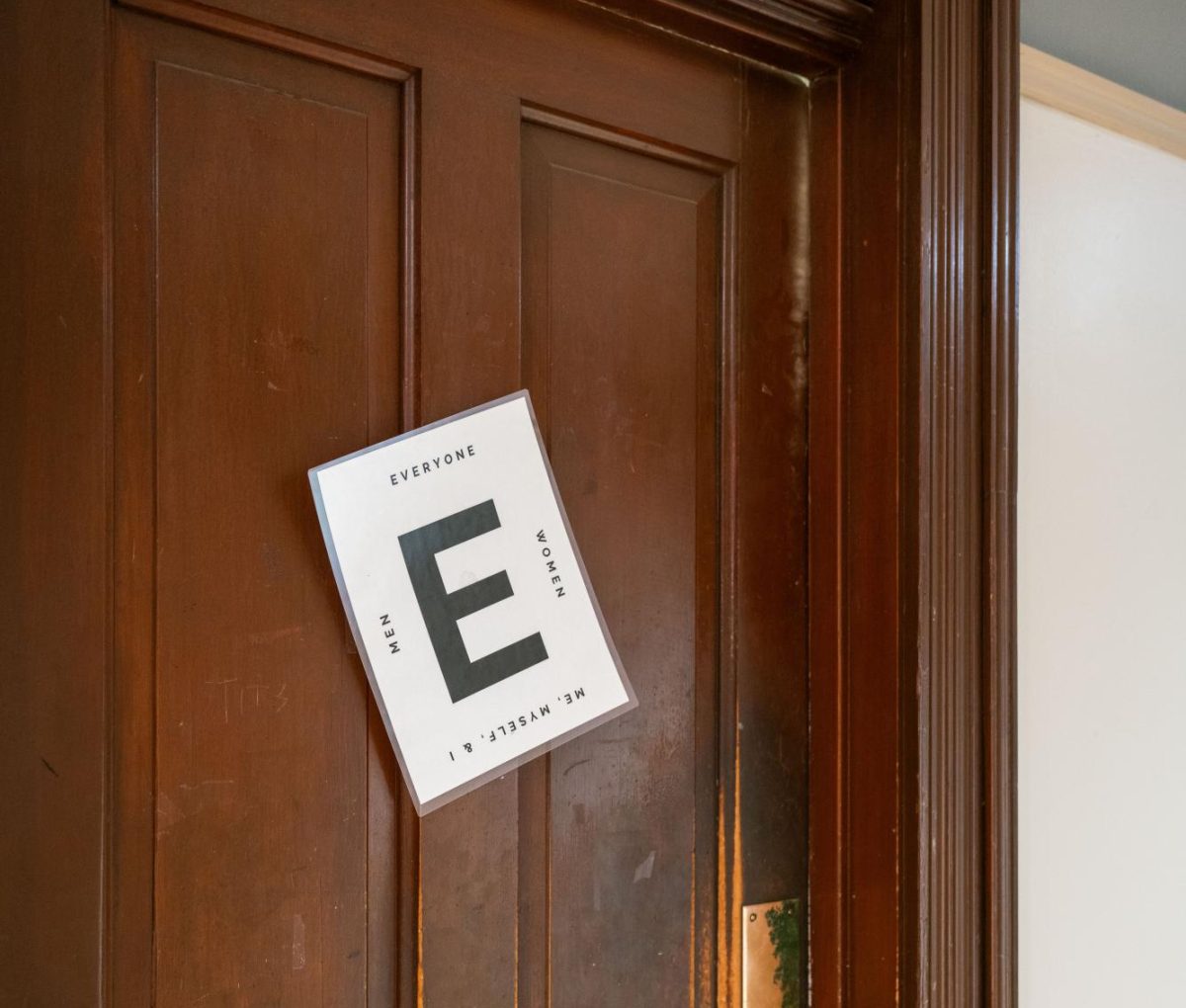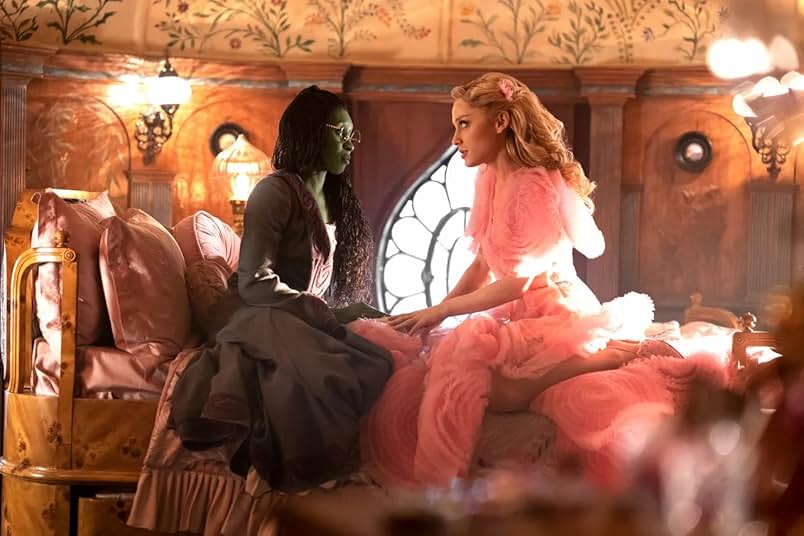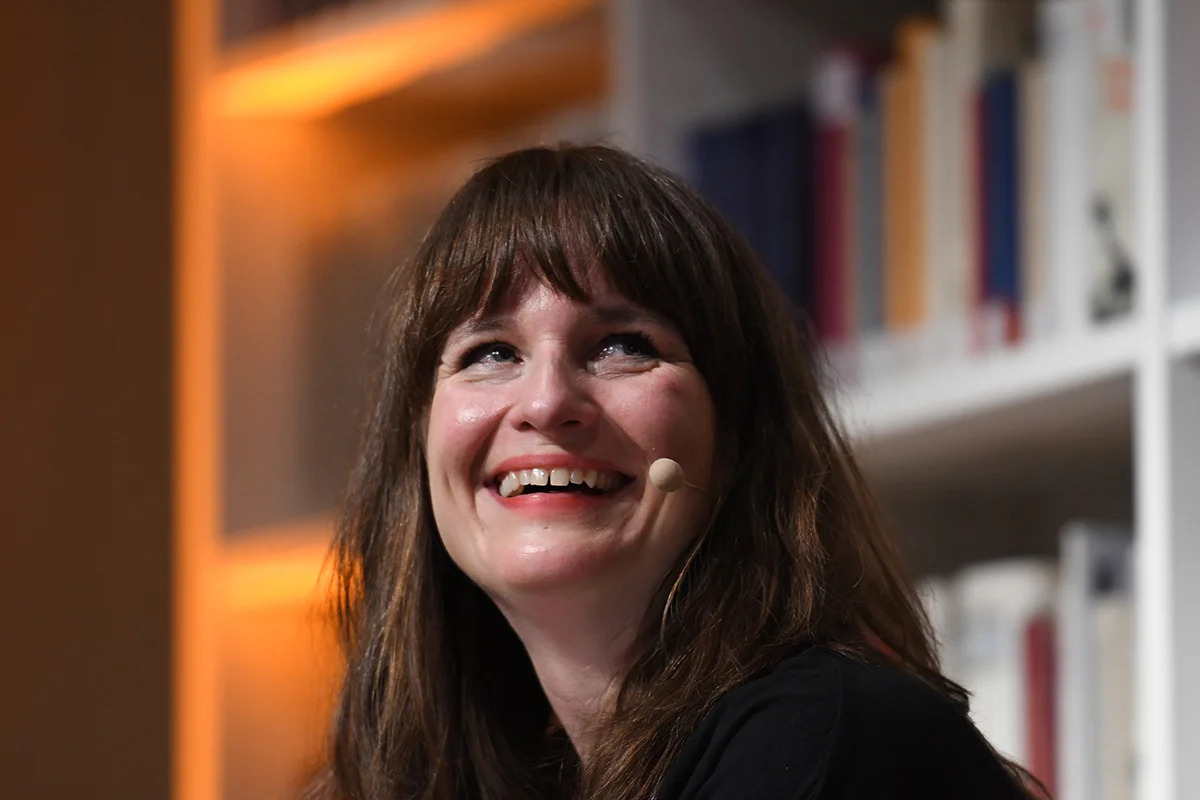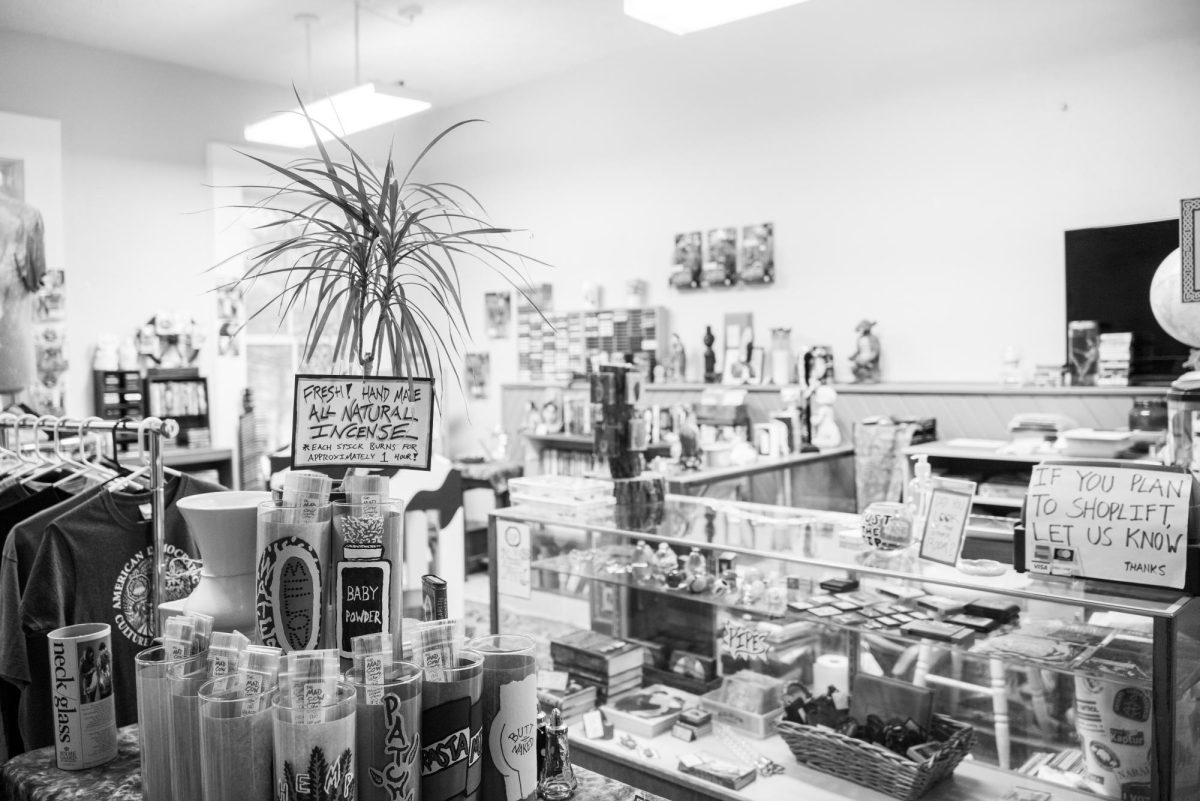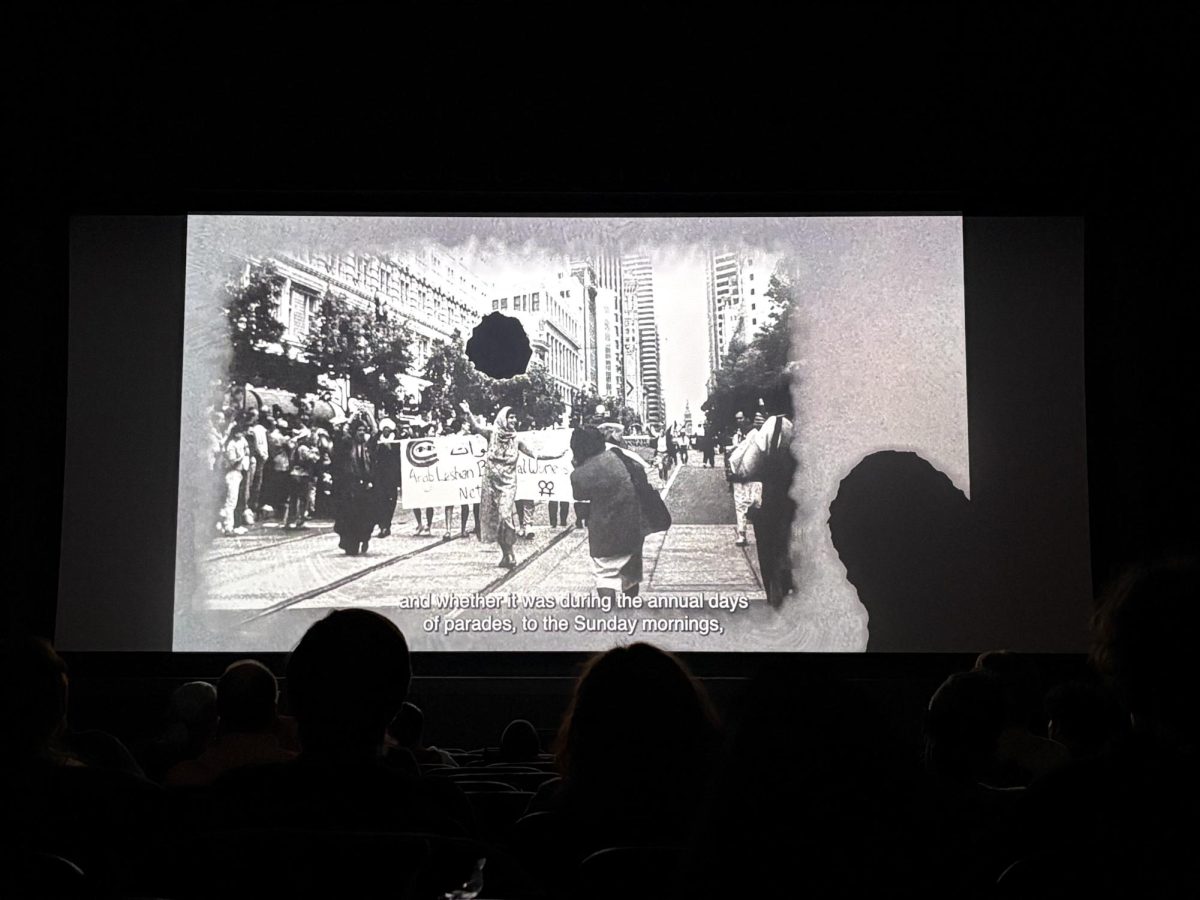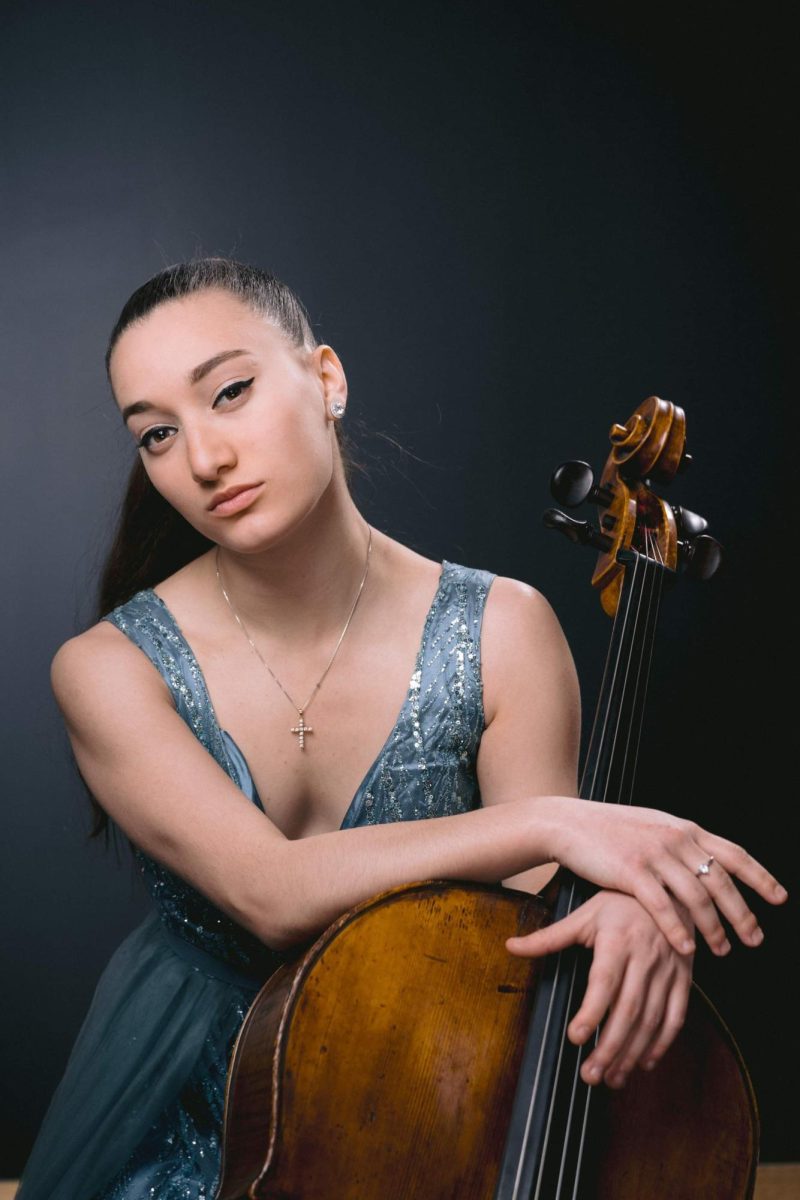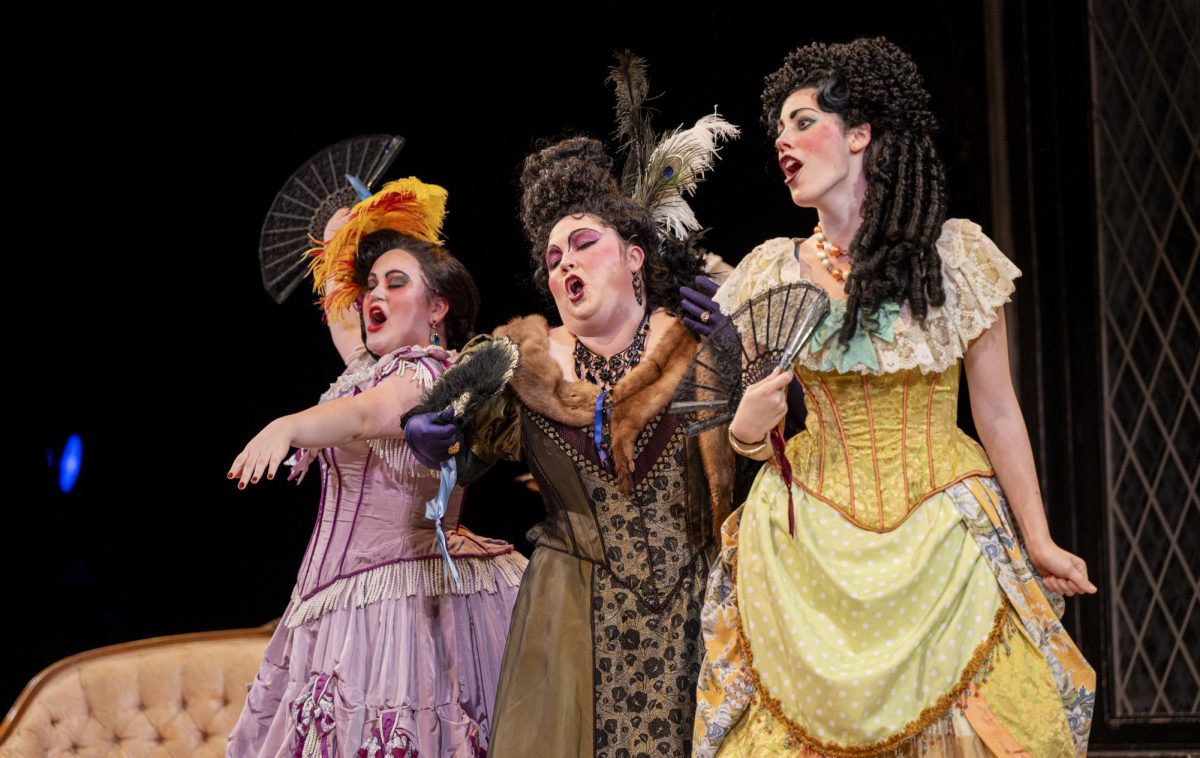OSTA’s Stop Kiss Pulls Pathos From a Brutal Situation
(From left) Peter, played by College sophomore Andrew Hartley and Callie, played by College sophomore Amelia Durham comfort Sara, played by College first-year Roux Namaei, after she is the victim of a brutal hate crime. Stop Kiss bravely takes an inside perspective on same-sex relationships, which are rarely shown on stage.
February 14, 2014
Callie and Sara, a budding couple, are walking through a West Village park when they stop to share a tender kiss. In response, a bystander harasses them with homophobic slurs, and when Sara fights back, she is viciously beaten — her head struck against a brick wall, a foot bashed into her back. She falls into a coma, and the new romance is cut brutally short.
This is the central conflict of Diana Son’s play Stop Kiss, produced by the Oberlin Student Theater Association, which ran last Thursday through Saturday in Wilder Main. The play, directed by College sophomore Maggie Bussard, follows the relationship between New York City traffic reporter Callie, played by College junior Grace Williams, and third grade teacher Sara, portrayed by College first-year Roux Nemaei. The script jumps in time between before and after the attack in the park, although the event itself is never shown.
While the show was advertised as concerning a “lesbian relationship,” the two main characters do not identify as lesbians at any point in the show. Bussard compared Stop Kiss to other plays from the late ‘90s and early 2000s that address homophobia, like Tony Kushner’s Angels in America. But while these two shows both portray homophobia, they differ in their focus. Stop Kiss speaks more to the idea of discovering and becoming comfortable with one’s fluid sexuality.
The cast’s commitment to authenticity was commendable, particularly Williams’s ability to be fully convincing in a dramatic moment immediately following a comedic scene. Nemaei was also able to easily transition from hospital patient to bubbly and energetic teacher. More importantly, they worked well as a pair. While initially the sexual tension between the two was less than palpable, ultimately Nemaei’s naiveté contrasted with Williams’s scatterbrained street smarts making for an endearing and balanced onstage repartee.
Roux Nemaei’s presence lit up the stage for the entire show, stealing scenes with her subtle romantic glances and nervous tics. Nemaei seemed to know Sara inside and out. The character was played with such honesty that it was hard to focus on anyone but her during these scenes. In the post-beating scenes when she is bed-ridden and, later, in a wheelchair, her movements were so lifelike that the audience truly believed she was in pain and unable to move with her natural grace.
The best scenes of the show were those in which the vulnerability, insecurity, anger and sadness of Williams’s Callie came through. The actress excelled in these dramatic moments, and more than one of her scenes evoked tears from the audience. Williams started off the show with evocative character choices that conveyed her insecurities in her about the new relationship. Unfortunately she stagnated in her scenes with Nemaei, as she spoke in monotone and didn’t connect with the other characters onstage.
Sara and Callie both talk extensively about their sexual relationships with men. The decision to cast College first-year Grace Freeman Lifschutz as George, Callie’s ongoing “friend with benefits,” was a strange choice. Freeman Lifschutz played the character with dignity and quirky poise, and her portrayal of George was very honest and believable, but the relationship seemed to negate the idea that Sara and Callie’s relationship is a new and exciting same-sex experience. After all, Sara and Callie are confused about their relationship because neither has had strong feelings for another woman before.
A subplot concerning a witness of the assault played by College sophomore Amelia Durham, and a detective, played by College junior Noelle Hedges-Goettl, was somewhat overdramatic. Durham and Hedges-Goettl seemed unsure of who their characters were or what they wanted from their encounters and relationships with others. Their actions were larger than life — not ideal in a show that is grounded in realistic and natural situations.
Bussard’s staging was simple and clean, allowing the words and actions of the characters to do the majority of the work. She also designed the set, which featured one large platform with the skyline of New York City painted over a purple ombre background, another clean and simple choice. The frequent, often unnecessary costume changes slowed down scene changes and could have been pared down without ill effect. Overall, however, Bussard’s obvious hard work on her entertaining and endearing directorial debut should be applauded. Stay tuned for her work in the future; it will only get better with time and practice.


